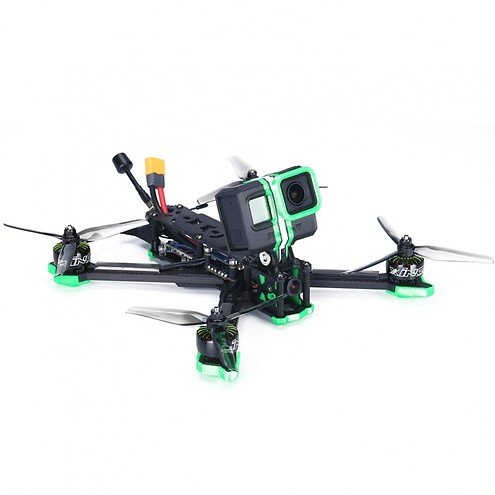
Hi,
Lexie here aka MaiOnHigh! In this article, I would like to explain the most important steps for getting into the FPV hobby. I'm guessing you found this blog post because you're ready to take the big step and fly a real FPV drone. Congratulations and welcome aboard! :-)
Let me guess: You heard about FPV some time ago and decided to give it a try? Maybe you've already bought a simulator and tried out your moves on it? Read this article to find out about the most important steps on your way to becoming an FPV pilot.
Before I start with the main part: if you're more of a visual learner or just like watching videos, take a look at our YouTube channel. For example, you can learn how to solder properly, there are product reviews, troubleshooting support and building instructions for your own drone.
You can also find a free Skillshare course on my channel, where I tell you all about drones, individual parts and which ones fit together, how to actually fly them and much more. Take a look!
And now let's start with the basics:
The radio control (also called RC transmitter)
If you don't have a radio yet, this is the first thing you should get. Most radio remote controls now have a USB port so that you can connect them directly to your games console or computer. This allows you to fly right from the start in the simulator with the remote control that you want to use later outdoors. If you have friends who fly FPV, just ask if you can try out their radio to see which one you like best. Here are a few tips from me:
Find out more about Crossfire in this video
The goggles
If you want to fly FPV, you need FPV goggles. As the name suggests, FPV (First Person View) refers to a variant of RC model building in which the model is controlled from the perspective of the remote-controlled model, as if from the viewpoint of a pilot, using camera technology. However, buying FPV goggles can be a little more difficult, depending on your budget. Before you buy a pair of goggles, you should ask yourself a few questions:
 |
 |
 |
||
|
& |
 |
 |
The drone - build or buy?
This is a recurring question in the FPV hobby. At the moment, we at FPV24 recommend: buy the first drone, build the second yourself! If you want to go full throttle - we recently made a YouTube video on how to build your own drone.
but, as already mentioned, I would recommend that you buy your first drone. Especially if you're not yet 100% sure whether the hobby is really for you and you'd rather start flying than spend hours building the drone. Try a starter set. This includes goggles, radio and copter and are already coordinated with each other.
 |
 |
If you already have a remote control and even goggles, here are my suggestions for a few freestyle and racing drones:
| Freestyle | Freestyle | Freestyle | Racing |
 |
 |
 |
|
Learning to fly
The first tip is always: practice in the simulator first. This saves money and gives you a first impression of the hobby. In addition, you can practice in a simulator completely independent of time and location. A lot has happened in the field of FPV simulators in recent years. The flight feel of the simulators is usually very realistic and they are well suited to training the first basic flight maneuvers and movement sequences.
The training sessions on the PC are suitable for both beginners and professionals. Advanced riders, for example, can practise new tricks safely on the PC and save themselves expensive crashes. There are also many video tutorials about flying with drones on YouTube, where you can learn the right technique.
Of course, you can also take off directly with a drone. Small drones and micro drones are particularly suitable here. They are much safer and easier to handle for beginners. A micro drone is usually fitted with a special frame that protects people and the surrounding area in the event of a crash. These drones are also particularly robust, so they shouldn't mind the odd crash.
Whatever you decide, at the end of the day, you should enjoy flying! That's the most important thing with any hobby. The FPV community is great and I highly recommend joining a Facebook group, for example. Being part of a community has many benefits and allows you to get useful information quickly.
I hope this short guide helps you get started in the hobby. See you in the air!
Your Lexie & your FPV24 Team
Want to stay up to date?
Then subscribe to our FPV24 newsletter now!